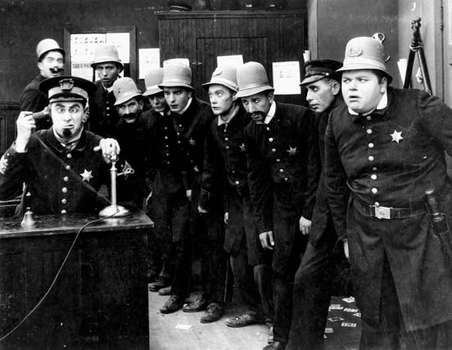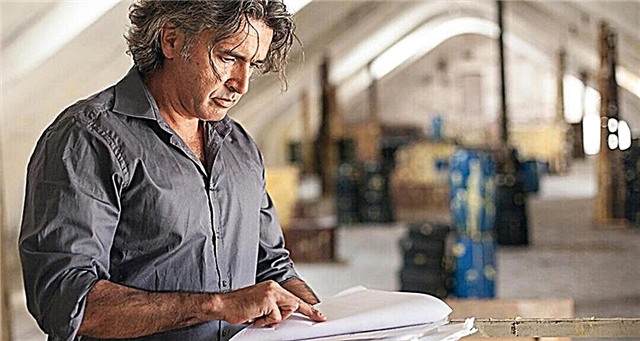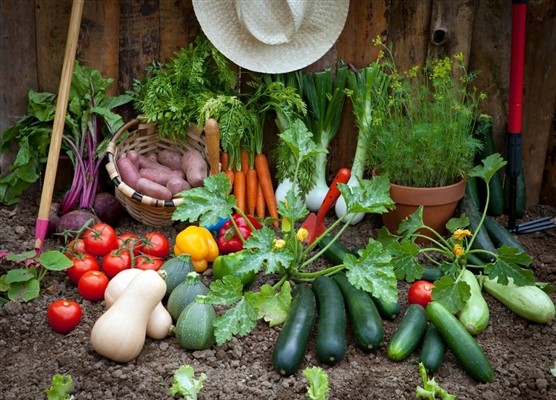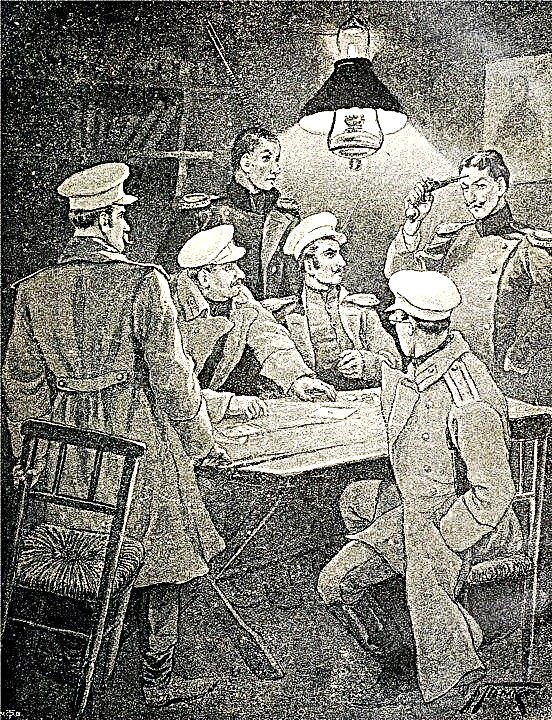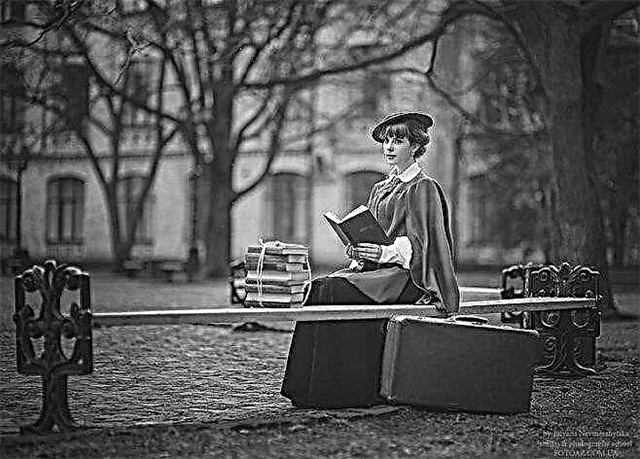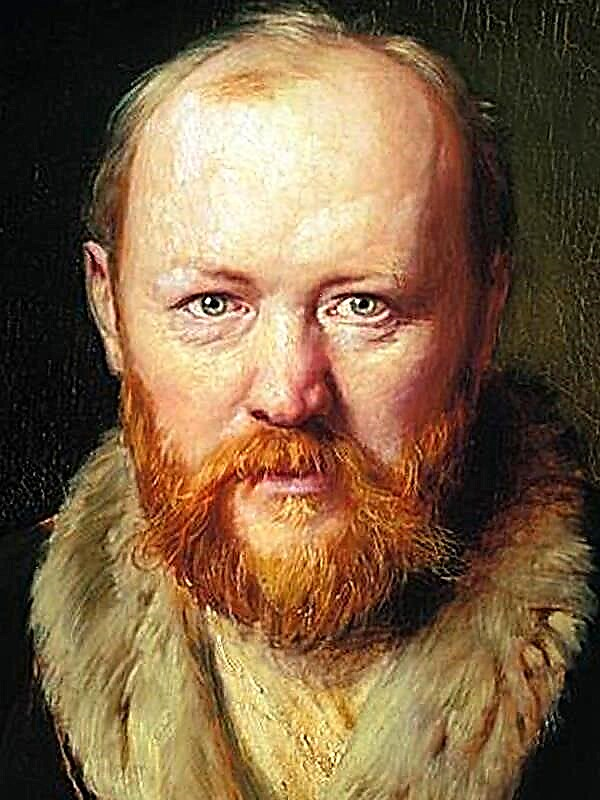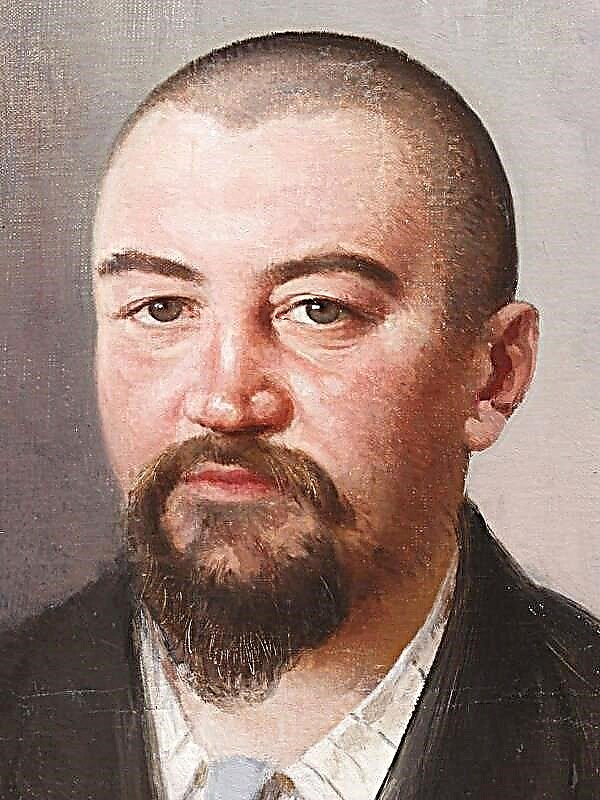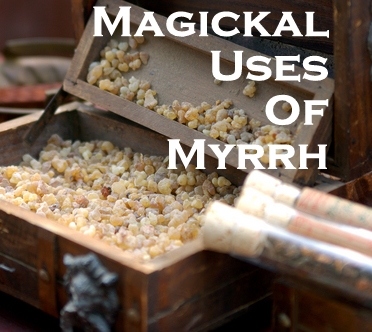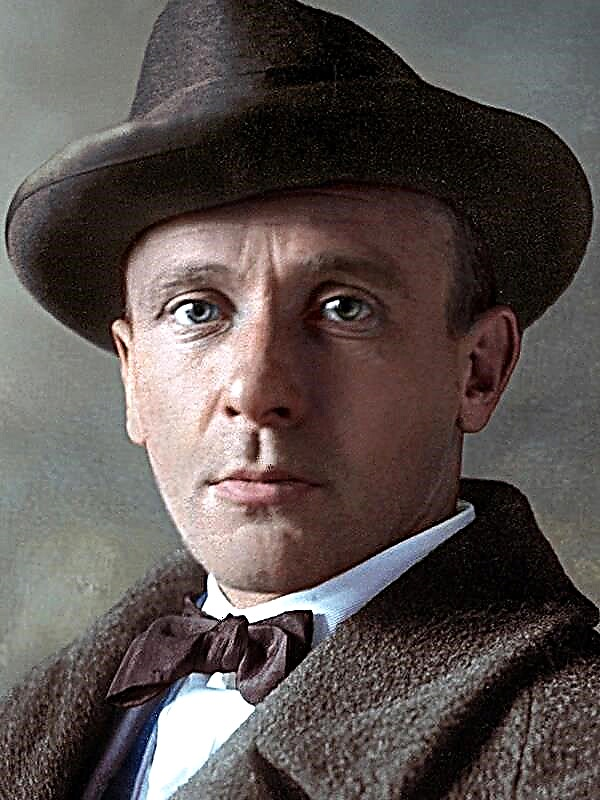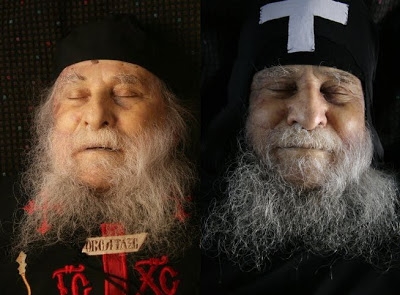Why is the role of the Renaissance more noticeable than the significance of any other era? Because the concept of the Renaissance was quite life-affirming, radiating the belief that a person is capable of much. And the leaders of this time proved the veracity of such thoughts with their works, ideas. The Renaissance did not stay in textbooks or museums; it inspired and continues to inspire many people. Ideas change, supplement or rethink, but it’s not only pleasant for a person, but it’s also important to think that his activity is not useless.
We can see the works of the Renaissance not only on the albums of famous artists (for example, Lady Gaga - “Artpop”), but also as a print. Often you can see the tender Venus Botticelli on t-shirts, and Mona Lisa Leonardo da Vinci, and where it was not used at all. Therefore, the Renaissance is closer than you think, and it is simply necessary for those who consider themselves to be an educated person to know the important principles, main signs and features of works and figures of that time. And this article can help you, where everything is described briefly and accessible.
Concept and periodization
The significance of the Renaissance for European culture is so huge that it determined the further development of all areas: from science to poetry. It became a transition between the Middle Ages and the Enlightenment, but the creations made during this period make the Renaissance truly special. It all started with Italy, as such terms were also invented by Italians, including the name “Renaissance”, which means “reborn”. The rise of the Renaissance really became the birth of a new world. The growing influence of the estates creates people who were alien to the religious, ascetic culture created by the Middle Ages. Therefore, a new culture is being built where the personality is proclaimed the center of the universe. The aesthetics and ideology of antiquity were taken as a sample. Thanks to the invented typography, it spread throughout Europe.
The Renaissance lasted from the XIV century to the end of the XIV century. The stages of development are as follows:
- Proto-renaissance (Early Renaissance) - from the 14th century to the beginning of the 15th century;
- High Renaissance (The highest heyday of the era, which stretched in time from the second half of the XV century to the first half of the XVI century);
- Late (Northern) Renaissance - from the end of the XVI century, and in some countries the beginning of the XVII century. When the Baroque era began in Italy, other nations only comprehended its overripe fruit.
However, the Late Renaissance is becoming more gloomy. The crisis of ideas inevitably occurs, because troubles and battles continue, and the naive assertion that a person is the center of something is questioned. Mysticism, a medieval worldview returns, marking the Baroque era.
Main features
The general characteristic of the Renaissance is such that interest in a person is elevated to the cult of his abilities, and in the field of aesthetics and philosophy there is a revival of ancient culture. Antiquity is recognized as a classic, which is actively studied and remade. A material image of the world appears, people praise the mind of the individual. Individuality and personal responsibility in the Renaissance give reason to look differently at the church structure, religion as a whole. Free criticism creates attacks on religious life, on compliance with the scriptures. Thanks to this, the era of the Reformation arises, the Catholic Church is being reformed. It is thanks to such sentiments and economic reasons that the Renaissance epoch originates in Italy.
What are the main signs of the Renaissance?
- As we said above, the grip of the church is loosening. Religious asceticism is criticized, theaters appear, carnivals, holidays, pleasures are allowed;
- Attention from God is now redirected to his creation (anthropocentrism);
- The status of a creator gains credibility. People are no longer shy to sign their work and do not believe that God leads them with their hand;
- The philosophy of humanism is spreading - respect for a person as a large, strong, independent person;
- The idea of a godlike person arises.
The roots of European civilization go back to antiquity, and not to the Middle Ages. Next, we will take a closer look at all aspects of the Renaissance and how exactly its achievements influenced further European culture.
Philosophy
Renaissance philosophy is a multitude of philosophical schools united by common ideas. The rejection of theocentrism forces people to concentrate on their own capabilities, thereby proclaiming the humanistic era.
The ideas of the Renaissance turned to ancient culture, from which thinkers not only mastered knowledge, but also processed it. The following principles and values of the era were formed from this:
- Anthropocentrism;
- The human right to creative expression, freedom is recognized. Creator Man;
- Everything in the world is understood through man;
- Aesthetics is more important than science and morality, the cult of the body.
Consider some of the philosophical directions and ideas of the Renaissance in more detail.
Humanism
In European latitudes, humanism spread in the XIV - mid XV centuries. This philosophical trend had an anti-clerical focus. From now on, thinkers prove that the makings of personality are not out of mercy given by God, but become the result of people's own efforts. A person has the right to active, creative activity, realization of individuality and freedom.
The philosophy of humanism breaks into literature, so the famous Renaissance humanists took up the pen. Another great Dante Alighieri in "Divine comedy"Is already ironic about the fanatical errors of Christianity and its semi-literate interpreters. Dante believes in the virtue of mankind, not as in the quality of God's will, but in the order of a conscious decision of a person. However, the first humanist is considered an Italian poet Francesco Petrarch. In his poems, he preached the ideals of love and earthly joy, which we can achieve without God's will. He doubts the afterlife rewards for piety, but he knows a way to achieve real immortality of the soul. How to do it? Engage in creative, active activity, because being happens only here and now, there will be no other chance.
Thinkers of the Renaissance (Petrarch, Boccaccio, Lorenzo Valla and others) professed a passionate belief in the mental and physical potential of a person who has not yet been revealed. And therefore, the philosophy of humanism has a life-affirming character. It was during the Renaissance that humanism acquired an integral system of views, causing a real revolution in the culture and worldview of new people.
Anthropocentrism
Anthropocentrism, as a philosophical thought, has become a characteristic feature of humanism. It comes from the Greek words “άνθροπος” - man and “centrum” - the center, already by the etymology of the word you can guess its meaning. Literally, this is putting a person in the center of the universe, a complete focus on him. He is no longer regarded as a sinful, imperfect being, as the bearer of a particular social group. He is an individuality, a unique, unique personality. The emphasis is on the godlike nature of man, which is expressed in his ability to creativity, creation.
Aesthetic attention to everything bodily and natural is adopted from ancient culture. They admire not only the spirit, but also the human body, magnify the unity of these principles.
The Italian philosopher Tommaso Campanella wrote in his treatises that bodily beauty is a gift of God, and bodily imperfection is a warning to others that they are an evil person. The personality of the Renaissance put an aesthetic beginning above ethical considerations.
Man, as the center of the universe, is beautiful and created to enjoy the world. But he should spend his life not in idle pleasure, but in creative activity. Thus, anthropocentrism destroys the medieval ethics of asceticism, passivity and powerlessness of people before omnipotent rock.
Natural philosophy
The thinkers of the Renaissance again turn to the study of nature, revising its medieval understanding as a non-self-sustaining sphere.
The characteristic features of philosophy are as follows:
- Natural philosophers approached the study of nature not through experience, but through reflection;
- The desire to separate philosophy from theology;
- The world can be known through reason and feelings, and not through divine revelation;
- Cognition of nature is combined with mysticism.
Representatives of natural philosophy developed various concepts. For example, the philosopher Francesco Patrici developed the doctrine of the world as animate infinity. And the mystic Jacob Boehme has developed a complex cosmogonic system, where nature is the mentor of man.
The natural philosophers were joined by the legendary German physician Paracelsus, an outstanding explorer of the natural world.
Paracelsus considered man a small world, which encloses all nature in himself. In his opinion, there are no prohibitions on human knowledge, we are able to study not only all essences and nature, but also that which is outside the world. The unusual nature of knowledge should not confuse, stop a person in the process of research.
Man and nature are still in harmony. But the expansion of human capabilities entails the study and submission of nature.
Pantheism
The philosophical doctrine of pantheism identifies the divine forces with what they supposedly created. The creator in pantheism did not spend a week in vain, he did not create our world, for he himself is a part of it, equivalent to all living things. Turning to the ancient heritage and natural philosophy, pantheists paid attention to the natural sciences, recognizing the animation of the world and space. There are two completely different directions in this teaching:
idealistic (nature is a manifestation of divine power)
naturalistic (God is only the totality of the laws of nature).
That is, if in the first direction the Universe is in God, then in the second direction God is in the Universe.
The philosopher Nikolai Kuzansky believed that God reveals the world from himself, and does not create it out of nothing. And Giordano Bruno believed that God is in all things, but in the form of related laws.
Galileo Galilei continued to study nature (he studied ancient philosophy, which led him to think about the unity of the world), Nikolai Copernicus (although he assigned people the first positions in the ranking of all living things, but still in a global sense their place is peripheral, since the Earth - not a leader in the open solar system).
Pantheism was characteristic of many philosophical theories of the Renaissance and it was he who became the unifying link between natural philosophy and theology.
Culture and art
The transition from medieval, dark thought to the freedom of the Renaissance was not forced. The supremacy of the church was preserved in the minds of people, and painting and poetry did not immediately, creativity itself gained a good reputation. In addition, illiteracy prevailed among the population. But the directions of the Renaissance gradually laid the foundation for a new culture, where education had weight, where creative personalities tried to gain universal recognition with their mind and talent.
For example, the Italian writer Boccaccio believed that a true poet should have extensive knowledge: grammar, history, geography, art, even archeology.
Apparently, the creators themselves tried to imitate the ideals, which they also fostered. These features of the Renaissance gave rise to the image of a god-like Man, creating, universal, who embodied in sculpture and paintings, received a voice in books. It was in art that the spirit of the Renaissance was best revealed.
Painting
A new picture of the world puts art in first place in Italy, as it was the only creative expression of himself. Painting, sculpture, architecture are great masters and creations that every educated person knows. The art of the Renaissance is divided into several stages, and each of them has its own interesting features.
 For example, the proto-Renaissance (XIV - early XV centuries) became a transitional period from the Middle Ages. The great painters Giotto, Mozaccio turn to religious topics, but the emphasis is on emotions, on people's life experiences. The heroes are humanized, and the halo of the saints becomes more transparent and invisible in the paintings, as is the case in the Botticelli's Annunciation or Raphael's Sistine Madonna.
For example, the proto-Renaissance (XIV - early XV centuries) became a transitional period from the Middle Ages. The great painters Giotto, Mozaccio turn to religious topics, but the emphasis is on emotions, on people's life experiences. The heroes are humanized, and the halo of the saints becomes more transparent and invisible in the paintings, as is the case in the Botticelli's Annunciation or Raphael's Sistine Madonna.
Artists of this era sought a material image of the world. They were rational painters, paintings of the Renaissance are distinguished by the use of geometry, the golden ratio. The perspective was depicted, thanks to which the masters could expand the range of depicted things and phenomena. Painting became monumental, for example, such is the painting of the Sistine Chapel of Michelangelo, created during the High Renaissance (second half of the XV - first half of the XVI centuries). It is voluminous and transcending
 framework murals, representing a cycle, and created in three years. Among the plots, one can notice the image of the creation of Adam, important for the Renaissance, where God is about to touch Man and bring his soul into his body. Another significant creation of Michelangelo is the sculpture of David, which
framework murals, representing a cycle, and created in three years. Among the plots, one can notice the image of the creation of Adam, important for the Renaissance, where God is about to touch Man and bring his soul into his body. Another significant creation of Michelangelo is the sculpture of David, which  proclaims a cult of man, the body. Proud, self-confident, physically developed - a clear curtsy towards ancient sculpture. The essence of a person by masters was seized in a pose, gesture, posture. Portraits of this era were also distinguished by a special kind of face - proud, strong, understanding their capabilities.
proclaims a cult of man, the body. Proud, self-confident, physically developed - a clear curtsy towards ancient sculpture. The essence of a person by masters was seized in a pose, gesture, posture. Portraits of this era were also distinguished by a special kind of face - proud, strong, understanding their capabilities.
For a long time, art developed on the basis of principles created by artists of the Renaissance. Nowadays, the art of the Renaissance has not lost its appeal; many of the images created in this era can be found everywhere. For example, the cosmetics company Lime Crime dedicated palettes of shadows to Botticelli's “Birth of Venus”. The creators of cosmetics assigned thematic names to each color, for example, “shell”, “muse”. Of course, the popularity of such products indicates the immortality of the masterpieces created during the Renaissance.
Literature
The humanistic worldview of the Renaissance also influenced literature. In the foreground is a man freed from the influence of the Middle Ages. An important role in the development of literature in Italy was played by the preservation of the heritage of ancient culture. From there, the concept of the ideal of man, an example of high humanity, is taken. The works of the Renaissance have characteristic features, for example, the main subject of the image is a strong personality, its life and contradictions. Attitude to nature has also changed - they began to admire it.
The easiest way to show the literature of the Renaissance on the example of the collection of short stories by Giovanni Boccaccio "The Decameron". The first short story of the collection is the main, connecting story. 7 girls and 3 boys are hiding from the plague in the castle. They sing, dance and tell each other various stories. These living, young people are the personification of a new Renaissance man, and the plague is the shackles of the Middle Ages. The main themes of the stories are different: love, anti-church, adventure, instructive. For the first time, the reader can see heroes from the people, namely students, grooms, carpenters and others. But at the same time, the author condemns heroes who are ugly, laughs at the shortcomings of the body, which is quite within the framework of the era with its cult of a physically developed organism. Boccaccio shows life as it is, allowing some frivolity.Therefore, church officials strongly disliked this book, and even publicly burned it in the square. But even such persecutions were not able to kill the popularity of the Boccaccio collection, because the worldview of people changed, and behind them, preferences.
Here we described in detail another example of a book that became the forerunner of the Renaissance - “Gargantua and Pantagruel”.
Architecture
 The influence of antiquity affects the architecture of the Renaissance. The manifestation in forms is especially visible: symmetry, geometry, proportions. The ordered arrangement of columns, asymmetrical outlines are replaced by arches, domes, hemispheres. Masters studied classical norms, but they recreated them to serve modern tasks.
The influence of antiquity affects the architecture of the Renaissance. The manifestation in forms is especially visible: symmetry, geometry, proportions. The ordered arrangement of columns, asymmetrical outlines are replaced by arches, domes, hemispheres. Masters studied classical norms, but they recreated them to serve modern tasks.
There are changes in construction equipment, materials, architectural terms are actively appearing. As in painting, architects stop creating anonymously; the deity no longer leads the hand of the creator.
 St. Peter's Basilica in Rome is a magnificent example of Renaissance architecture. The best architects, sculptors, artists of Italy were involved. Construction lasted a long time, but now it is the main church of the Catholic Church, a real decoration of the city. Antique sculpture is placed on the facade of the cathedral, and the symbol of the Vatican - the dome was designed by Michelangelo himself. Nowadays, there is an observation deck, rising to which you can admire Rome.
St. Peter's Basilica in Rome is a magnificent example of Renaissance architecture. The best architects, sculptors, artists of Italy were involved. Construction lasted a long time, but now it is the main church of the Catholic Church, a real decoration of the city. Antique sculpture is placed on the facade of the cathedral, and the symbol of the Vatican - the dome was designed by Michelangelo himself. Nowadays, there is an observation deck, rising to which you can admire Rome.
Residential buildings also acquired their own characteristics. For example, cornices appeared, and architectural details, windows were repeated on each floor of the house. The main door was designated in a special way: a balcony or a rust.
It is interesting that the material for the construction of the cathedral was taken from ancient buildings, which once again confirms the adaptation of the achievements of antiquity to solve the urgent problems of the Renaissance.
Theater
Liberation from the shackles of the Middle Ages was reflected in the development of the theater. The pagan ideals of antiquity previously rejected by the church are now actively studied, rose from the dark and became in demand. At first they staged the dramaturgy of antiquity, restored images, but over time, the theater still took on new forms. Two directions arose: the Renaissance "scientific comedy" and the folk "comedy del arte".
What was the specificity of these areas?
- "Scientific comedy" directly related to antique comedy: the division into acts remained, the active role of servants remained. Such productions were popular, and the best example of "scientific comedy" are the plays of Nicolo Machiavelli "Mandrake" and "Calender." There was a tragedy that, unlike the antique, did not reach its peak.
- "Comedy del arte" partially absorbed the elements of "scientific comedy", but at the same time there was a place for farce and parody in it. The actor was assigned a “mask”, which meant a certain type of hero (for example, if the actor came out in Pantalone's mask, then the audience understood that they were an mean old man). The mask was chosen by the actor at the beginning of a career that never changed. The replicas were not registered in advance, the actor needed to know only the general scenario. Knowing the specifics of his role, the performer improvised, performed various tricks. Only the gentlemen who played lovers refused to improvise, by the way, their costumes also differed. The popularity of such performances was also overwhelming, but gradually, by the 17th century, it fell into decay.
In the Renaissance, there was a significant upsurge of art, but the theater was not developed as fine art or architecture. However, the changes that occurred with the theater during the Renaissance epoch, eventually gave rise to the activities of such masters as Shakespeare.
Music
Like all creators of the Renaissance, musicians were engaged in the study of knowledge of ancient culture. To find the subtlety lost in the "dark time", the perfection of music - this is the goal of the composers of the new time. The individual style and concept of “composer” are formed due to the abolition of anonymity of creativity. A person appears in the Renaissance, who, merging with the text and sublime music, creates a new mood. Yes, church music continues to exist, still relying on a many-voiced choir and organ. But, thanks to fans to play the lute or harpsichord in the houses, secular music develops. The universal creative element leads to the development of the art of dance, which is why a dance melody appears.
It is in the Renaissance that a number of tools expand significantly. New musical genres appear: solo song, opera, which reach their peak in the next century.
Key representatives
The Renaissance world was extremely versatile. It was at this time that the development of natural science, geography, astronomy, mechanics, art, architecture, science. The invention of printing gives people the opportunity to get an education, so it becomes an important part of life. Education in the Renaissance was such that a person was seen educated, cultural, possessing oratory, able to influence the mind of others. Therefore, Renaissance figures were often not just first-class artists, but also inventors, for example, Leonardo da Vinci.
We will get acquainted with the main representatives of the Renaissance in various fields: from art to architecture.
Painters
Immediately several geniuses of fine art created at one time, fixing for 500 years the main features of European painting. This is a realistic image, perspective, anthropocentrism, portraits and landscapes. But without the first masters who decided on changes in the visual arts, none of this would have happened.
 Such a master was Giotto, who worked in the era of the Proto-Renaissance. Before him are icons and frescoes made according to the Byzantine canons. Flat image, lack of background, frozen faces. But Giotto appeared, and voluminous, laconic figures with the first emotions began to be depicted on the frescoes: longing, languor, surprise and not only. His experiments caused a real full house among the public, people came from distant places, overcoming several kilometers on foot, just to see such an unprecedented one.
Such a master was Giotto, who worked in the era of the Proto-Renaissance. Before him are icons and frescoes made according to the Byzantine canons. Flat image, lack of background, frozen faces. But Giotto appeared, and voluminous, laconic figures with the first emotions began to be depicted on the frescoes: longing, languor, surprise and not only. His experiments caused a real full house among the public, people came from distant places, overcoming several kilometers on foot, just to see such an unprecedented one.
Another pioneer was Masaccio. He first began to practice creating a linear perspective, thereby bringing the image closer to reality. He knew the anatomy, but because the body became more proportional than that of Giotto. But even the bodies acquired expressiveness, so suffering is possible in the pose of the hero, and not just on the physiognomy. Naturally, all these innovations were taken by painters of the High Renaissance.
 The great Italian artists: Leonardo da Vinci, Michelangelo, Raphael and Titian - figures of the highest prosperity of the Renaissance. Raphael created sensual images, carefully built the composition of the picture. Titian experimented with color, composition, technique. Michelangelo portrayed developed, strong bodies, creating the image of a man of the Renaissance. And Leonardo da Vinci not only created living images on canvases, but also studied mechanics, anatomy, literature, and philosophy. It is called the personification of the Renaissance.
The great Italian artists: Leonardo da Vinci, Michelangelo, Raphael and Titian - figures of the highest prosperity of the Renaissance. Raphael created sensual images, carefully built the composition of the picture. Titian experimented with color, composition, technique. Michelangelo portrayed developed, strong bodies, creating the image of a man of the Renaissance. And Leonardo da Vinci not only created living images on canvases, but also studied mechanics, anatomy, literature, and philosophy. It is called the personification of the Renaissance.
The paintings of Renaissance artists are still considered the pinnacle of fine art. Every educated person knows the names of these geniuses and seeks to see creations live.
Writers
If Dante Alighieri in the “Divine Comedy” still refers to religious teachings, then the authors of the Renaissance represent man as the highest creation of nature, rejecting slavish submission. Boccaccio in the collection of short stories “The Decameron” ridicules prejudices, directly speaking about carnal pleasures and life-affirming humor, which makes life brighter and easier.
The vices of man condemned by Sebastian Brant in the poetic satire "Ship of fools”, Saying that bad manners, envy and other bad qualities come from stupidity. Widespread philosophical works that study human nature, for example, "ExperiencesMichel Montaigne and Praise of Nonsense by Erasmus of Rotterdam. Of course, their philosophical concepts, views were described by scientists, artists, for example Giordano Bruno, Leonardo da Vinci.
The development of the theater leads to the evolution of dramaturgy, so authors like Lope de Vega and Tirso de Molina appear. The plays of these authors still collect full rooms, are the repertoire of the classical theater, surprising the viewer with the relevance of the themes and the richness of the language. The achievements of the Renaissance dramaturgy give a chance to fully reveal talent Shakespeare, which absorbed the knowledge of Renaissance thinkers, for example, it has many reminiscences from Michel Montaigne.
Poets
“Through the word, the human face becomes beautiful,” writes Renaissance poet Francesco Petrarch.
It was he who became the founder of the new European lyrics, creating in the sonnets a harmonious combination of purity and love of languor, passion and purity. Pushkin identified the “language of Petrarch” and the language of love itself, since the poet of the Renaissance masterly, inspiredly, vividly wrote about the feelings between a man and a woman. More about his work, we wrote here.
In Italy, more talented poets appear, namely Ludovico Ariosto (author of the poem "Frantic Roland"), Torquato Tasso, Jacopo Sannadzoro. In France, the great poet of the era was Pierre de Ronsard, here analysis of his work. Then he was considered the "prince of poets", since he introduced into poetry a variety of poetic dimensions, the harmony of rhyme and syllable. In England, the largest representatives of poetry were Jeffrey Chaucer and Edmund Spencer. True, Jeffrey Chaucer anticipated the Renaissance, he became "the father of English poetry." And Edmund Spencer gave the English verse melodious, was "the arch-poet of England." Poets of the Renaissance were revered, considered great masters of the word, and they still retain this title.
Composers
In Italy, influential composer schools developed: Roman (Giovanni Palestrina) and Venetian (Andrea Gabrieli). Palestrina created a model of Catholic sacred music, and Gabrieli combined the choir with the sound of other instruments, approaching secular music.
In England, composers John Dubstayl and William Byrd created at different centuries. Masters preferred sacred music. William Byrd received the title of "Pioneer of Music."
The talented composer Orlando Lasso has shown musical ability since childhood. His secular music contributed to the fact that Munich became the musical center of Europe, where other talented musicians came to study, namely Johann Ekkard, Leonard Lechner and Gabrieli.
Of course, Renaissance composers developed not only traditional directions, but also instrumental music, expanding the range of musical instruments used (stringed bowed instruments, clavier, and so on). The activities of the musicians of the Renaissance created the possibility of the appearance of operas in the future, providing the art of sounds and melodies with a planned and productive development.
Architects
The "father of architecture" of the Renaissance is called Filippo Brunelleschi. He created many works of art, one of which is the church of San Lorenzo. Another representative of the early Renaissance, architect Alberti, built the Rucellai Palace in Florence. Unlike Brunelleschi, he did not use lancet and used individual orders for different floors. During the High Renaissance, the main thing in architecture was Donato Angelo Bramante. He was the first architect of St. Peter's Basilica in Rome, created his plan.
But what is remarkable about the masters of the Renaissance is the fact that many finished, completed each other's projects. So, the construction of St. Peter's Cathedral was continued by Michelangelo, and after his death, another architect took over the project. It turned out that as many as 12 architects were involved in the construction of the main Catholic church at different times.
Or another example, the interior decoration of the church of San Lorenzo, which was built by Brunelleschi, created by Michelangelo. In other countries, the style of architecture of the Italian Renaissance is spreading, but with the introduction of local architectural traditions. Further, experiments in architecture lead to styles such as Baroque and Rococo.
Conclusion
We hope that this article has helped you get acquainted with the Renaissance or encouraged you to study this or that area of culture in more detail. Indeed, thanks to the strong desire of the Renaissance geniuses for knowledge, great discoveries were made and the rigid framework of prejudice was destroyed.

